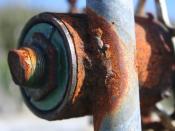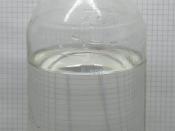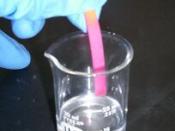Planning
In this experiment I am going to observe and record the reaction between Magnesium and Hydrochloric Acid. My aim is to find out how the rate of this reaction will be affected if we change the concentration of the Hydrochloric Acid.
The rate of a chemical reaction is a measure of how fast the reaction takes place. It is important to remember that a rapid reaction is completed in a short period of time. An example of a fast reaction is an explosion, and an example of a slow reaction is rusting.
In the experiment, the Magnesium reacts with the hydrochloric acid to create Magnesium chloride and Hydrogen. The balanced formula for this is:
Mg(s) + 2HCL(aq) = MgCl2(aq) + H2(g)
Magnesium + Hydrochloric Acid => Magnesium Chloride + Hydrogen
Magnesium will react with Hydrochloric acid, because it is higher in the reactivity series than Hydrogen. The Magnesium displaces the Hydrogen in the acid, so it forms Magnesium Chloride and Hydrogen gas.
For a reaction to occur, the reactant particles (Magnesium and Hydrochloric Acid) must collide. Only a certain fraction of the total collisions are actually successful collisions though. The successful collisions have enough energy at the moment of impact to break the existing bonds and form new bonds, resulting in the products of the reaction. Increasing the concentration of the reactants bring about more collisions, and therefore more successful collisions, increasing the rate of reaction.
Equipment
* Magnesium Ribbon
* Different concentrations of Hydrochloric acid (0.25, 0.5, 1.0, 1.5 and 2.0M)
* Beaker
* Measuring cylinder
* Tube to carry the hydrogen into the measuring cylinder and a bung
* A container full of water
* Safety goggles
* Stopwatch
Method
First, I will pour 50cl of 0.25M Hydrochloric acid into my beaker. I will then fill my...


